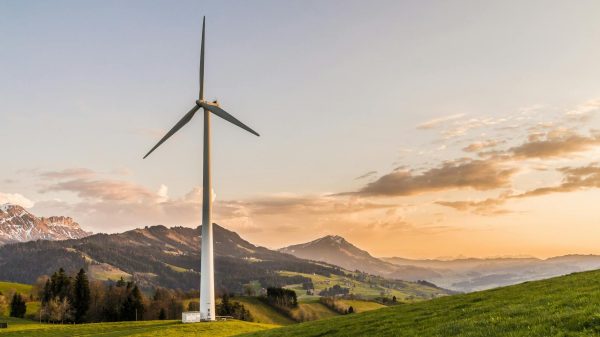Measures to combat the carbon footprint must start with individual action by people in their daily lives, and extend to economic activities and governments and institutions to ensure that it is drastically reduced, as the future of the planet is at stake.
The carbon footprint is calculated for both direct and indirect emissions of compounds such as methane (CH4), nitrogen oxide (N2O), hydrofluorocarbons (HFCs), perfluorocarbons (PFCs), sulphur hexafluoride (SF6) and, especially, the one that has contributed most to global warming: carbon dioxide (CO2).
“Every time we travel by car, charge our mobile phones or run the washing machine, among thousands of other routine activities, we leave behind a trail of gases that accumulate in the atmosphere and overheat the planet. These emissions accelerate climate change, as the United Nations (UN) warns in its Sustainable Development Goals (SDGs), and if we do not neutralise them in time with the decarbonisation of the economy and other measures, such as environmental taxes, a more inhospitable world awaits us around the corner”, warns Iberdrola in a report.
Calculating the carbon footprint
The formula for calculating the carbon footprint is obtained by multiplying the consumption data (activity) by the corresponding emission factor depending on the type of fuel or gas used,
In this regard, the Spanish Ministry for Ecological Transition and the Demographic Challenge published the “Guide for the calculation of the carbon footprint and for the design of an organisation’s improvement plan”
This guide is intended as a support tool in the calculation of greenhouse gas (GHG) emissions for those entities that decide to calculate the carbon footprint of their organisation for the scope 1+2.
For these entities, knowing the origin and magnitude of their emissions will be the first step to reduce their energy costs as well as to reduce their GHG emissions, contributing to the fight against climate change.
The calculation of the carbon footprint consists of applying the following formula: carbon footprint = activity data x emission factor:
- The activity data point is the parameter that defines the degree or level of activity generating GHG emissions. E.g. amount of natural gas used for heating (kWh of natural gas).
- The emission factor (EF) is the amount of GHG emitted per unit of the parameter “activity data”. These factors vary depending on the activity concerned. As a result of this formula we will obtain a given amount (g, kg, t, etc.) of carbon dioxide equivalent (CO2 eq).
The Ministry has also launched the “Carbon footprint, offsetting and carbon dioxide absorption projects register”.
This register was at first voluntary, but Law 7/2021 establishes that Spanish companies are obliged to reduce their carbon footprint now in 2022, records the efforts of Spanish companies, public bodies and other organisations in the calculation, reduction and offsetting of the greenhouse gas emissions generated by their activity. It also includes a portfolio of forestry projects through which these organisations can offset their footprint.
Specific actions
Many companies want to go beyond the regulations and have made it a priority to reduce their carbon footprint by even more ambitious deadlines than those agreed at successive Conferences of the Parties(COP), the annual summit held by the United Nations Framework Convention on Climate Change (UNFCCC), which brings together the 196 countries plus the European Union that make up the Parties. The venue for the COP27 in November 2022 is Sharm el-Sheikh, Egypt
Such is the case of Telefónica as revealed by its CEO, Ángel Vilá, at the opening of the 12th Global Workshop on Energy and Climate Change, the company intends to increase the amount of ESG financing to over 10,000 million euros in the coming years.
“Beyond our own transformation, we also help our customers address their environmental challenges. Our Eco Smart cloud services, IoT, big data and Artificial Intelligence reduce energy and water consumption and CO2 emissions; improve traffic planning and air quality; and drive the circular economy. Our ambition is to help our customers avoid 12 million tonnes of CO2 per year. And this has only just begun – ultra-fast 5G connectivity and the solutions it enables are expected to further reduce carbon emissions across all sectors,” Vilá stressed.
For its part, Repsol on its path towards decarbonisation, has committed to being a zero net emissions company by 2050, in line with the targets set out in the Paris Agreement.
Endesa with the collaboration of the Club de Excelencia en Sostenibilidad, has produced a guide to good practices for CO2 management in companies.
“A smooth transition to decarbonisation can be achieved by refraining from new investments in fossil fuels and ensuring security of supply. That is why we want to use electricity as an energy source,” it stresses.
Among the various possible actions, ecological and forestry restoration in degraded land throughout Spain is increasingly being urged as one of the best practices.
Companies such as Seat have developed one of the largest and most important photovoltaic plants in the world. They have managed to generate 17 million kW/h per year. The energy is equivalent to that needed for 20% of the production of its Leon model.
Cement company Cemex is committed to reducing its emissions by 25% by 2023 and to developing more sustainable and energy-efficient building solutions.
The sustainability strategy of Aena, the Spanish airport operator, is based on the 2021-2030 Climate Action Plan (CAP) with a total investment of 750 million euros to carry it out. The goal is to become carbon-neutral by 2026, laying the groundwork for achieving zero emissions by 2040, bringing the global aviation sector’s global commitment forward by ten years.
Circular Economy
It also highlights the fact that the circular economy is configured as the “great ally” of companies when facing “the most urgent global sustainability challenges”, according to the experts who participated in the fifth edition of the ‘Circular Economy Business Forum‘.
This meeting, organised regularly by the non-profit organisation Forética within the Circular Economy Action Group, is attended by some fifteen large companies such as Ecoembes, Airbus, Mahou San Miguel, Epson and Naturgy, among others.
How does the war in Ukraine affect us?
Russia’s invasion of Ukraine immediately halted the recovery from the COVID-19 pandemic and has put the global economy on a path of slower growth and rising inflation, says the Organisation for Economic Co-operation and Development (OECD).
“The war has once again highlighted the importance of energy security. Accelerating the transition to green energy would improve energy security while reducing carbon emissions. Regulatory and fiscal incentives can stimulate the move towards alternative energy sources, but large-scale investments in renewables will require copper, rare earths and other materials that are concentrated in a few countries. Free international trade is therefore essential to achieve energy transition and energy security,” says the organisation.
The shelling has caused severe damage to Ukraine’s environment, natural resources and infrastructure. This includes forests, terrestrial and marine ecosystems, along with industrial facilities, transport infrastructure and housing.
The result is “immediate and long-term consequences for human health and ecosystems,” says the OECD.
The future is uncertain, both in terms of the duration of the war and its consequences, but the commitment to progress towards a progressively less polluted planet and a firm commitment to renewable energies are unquestionable.








